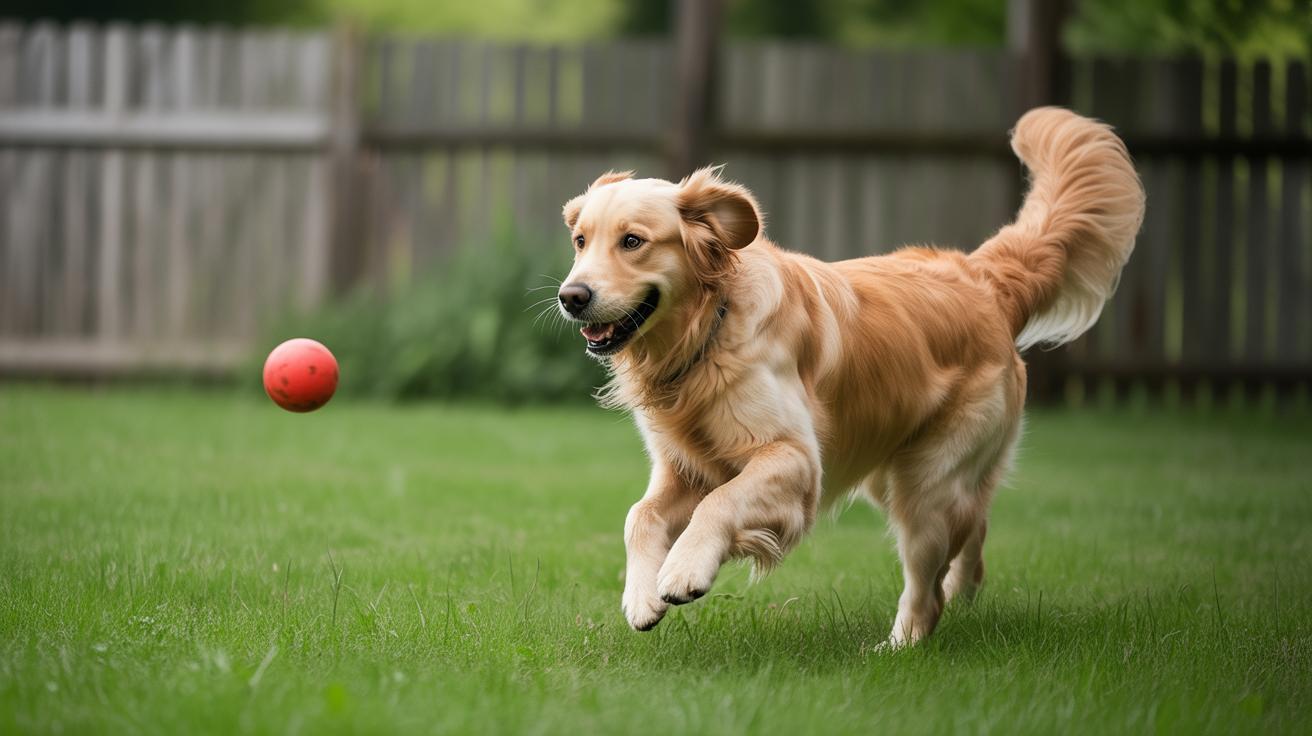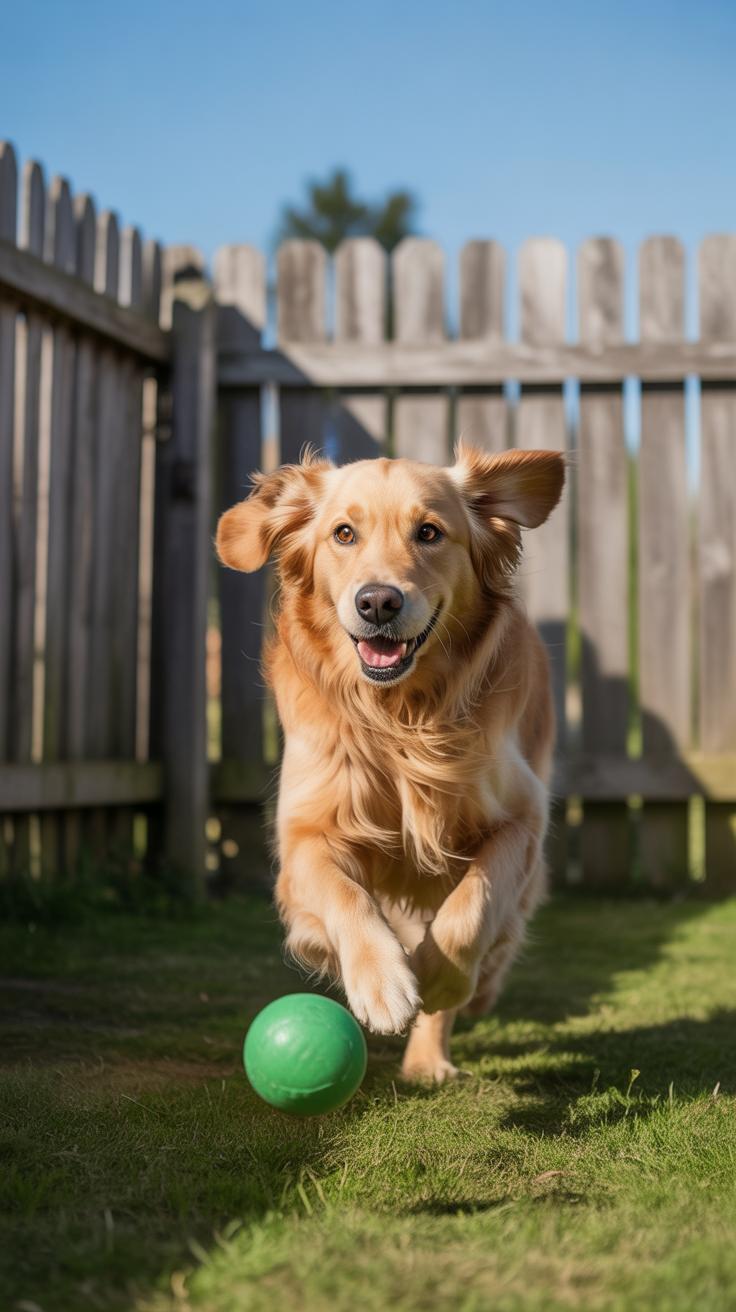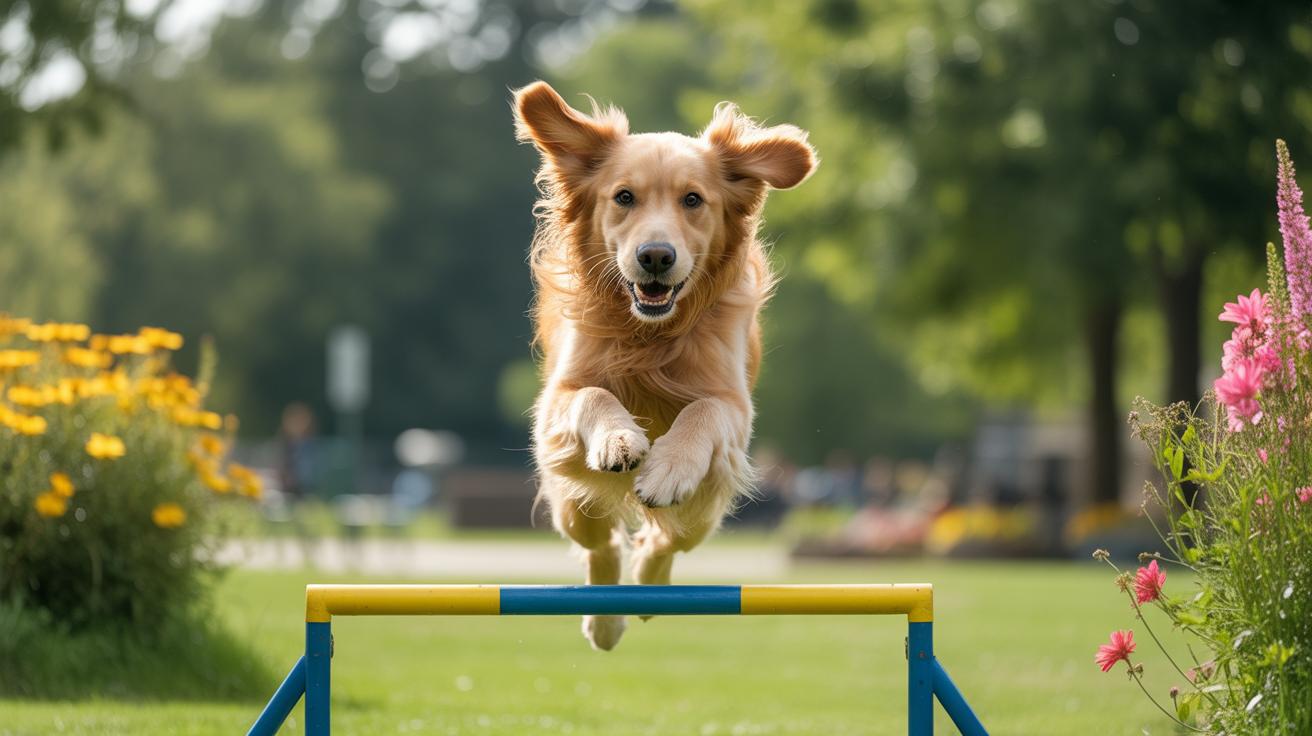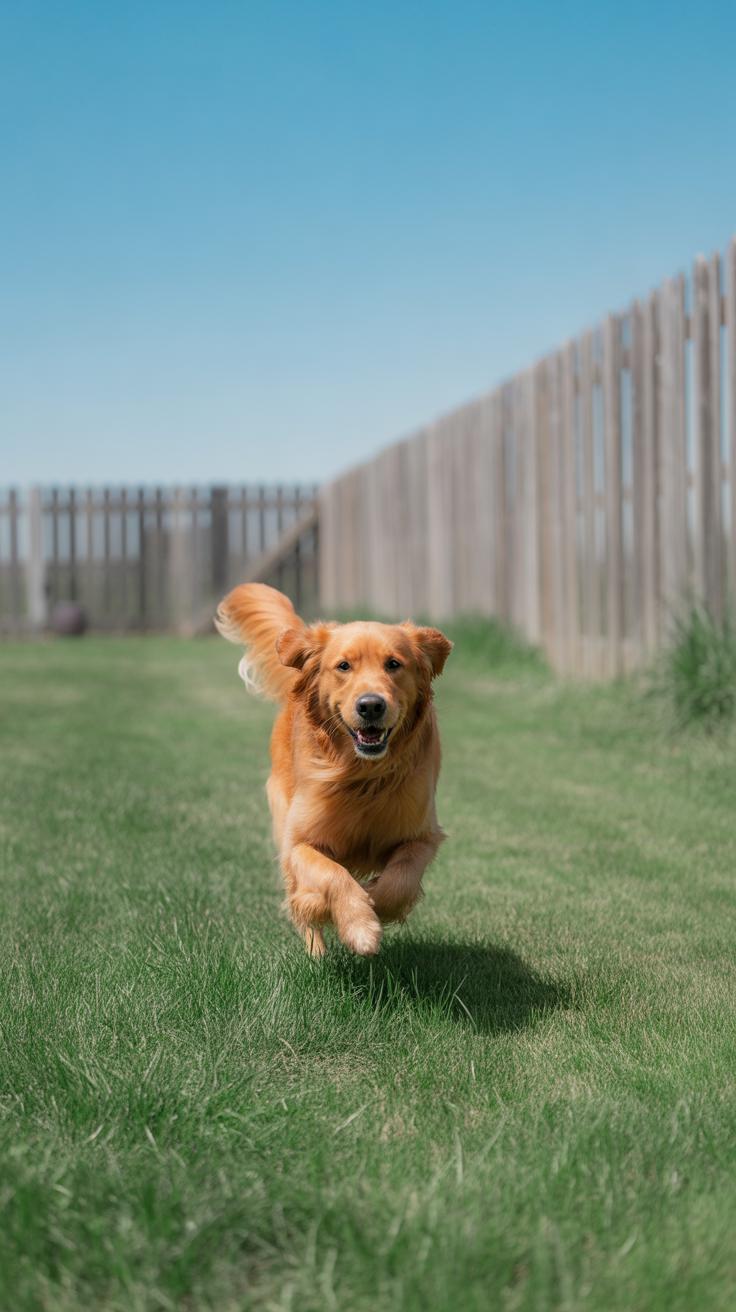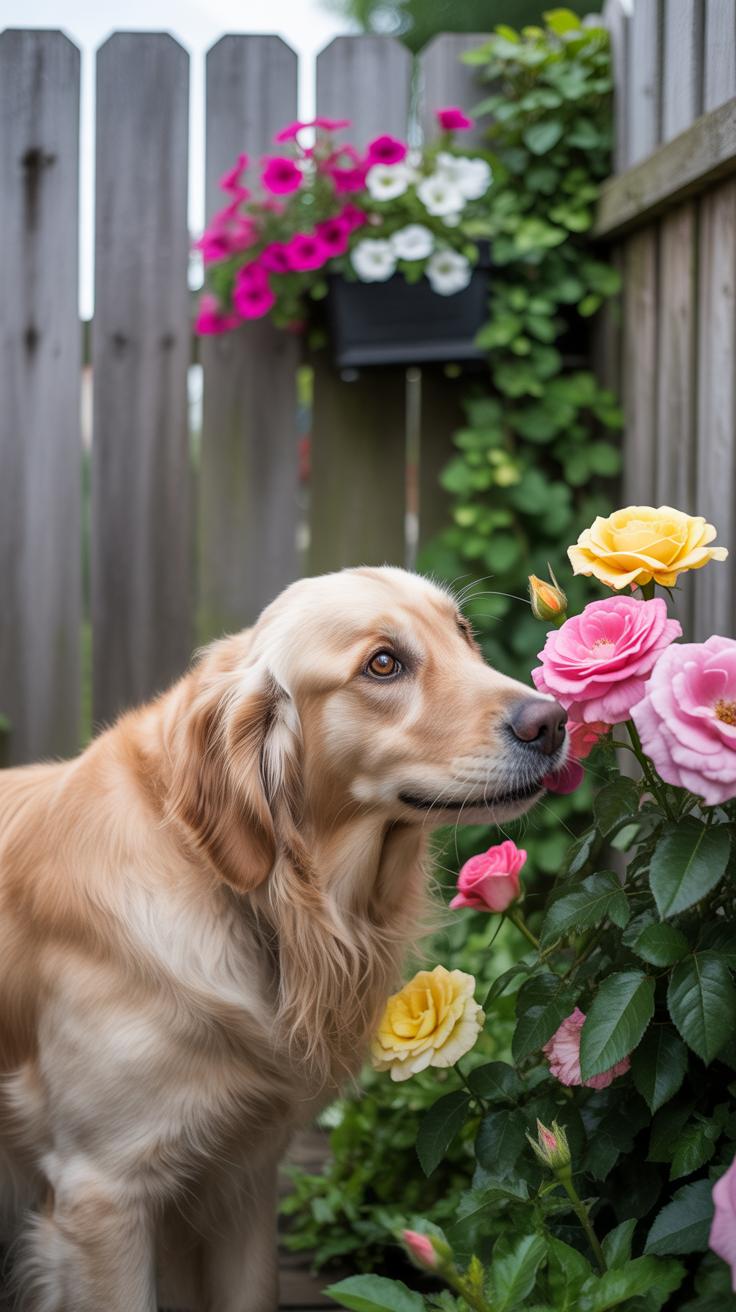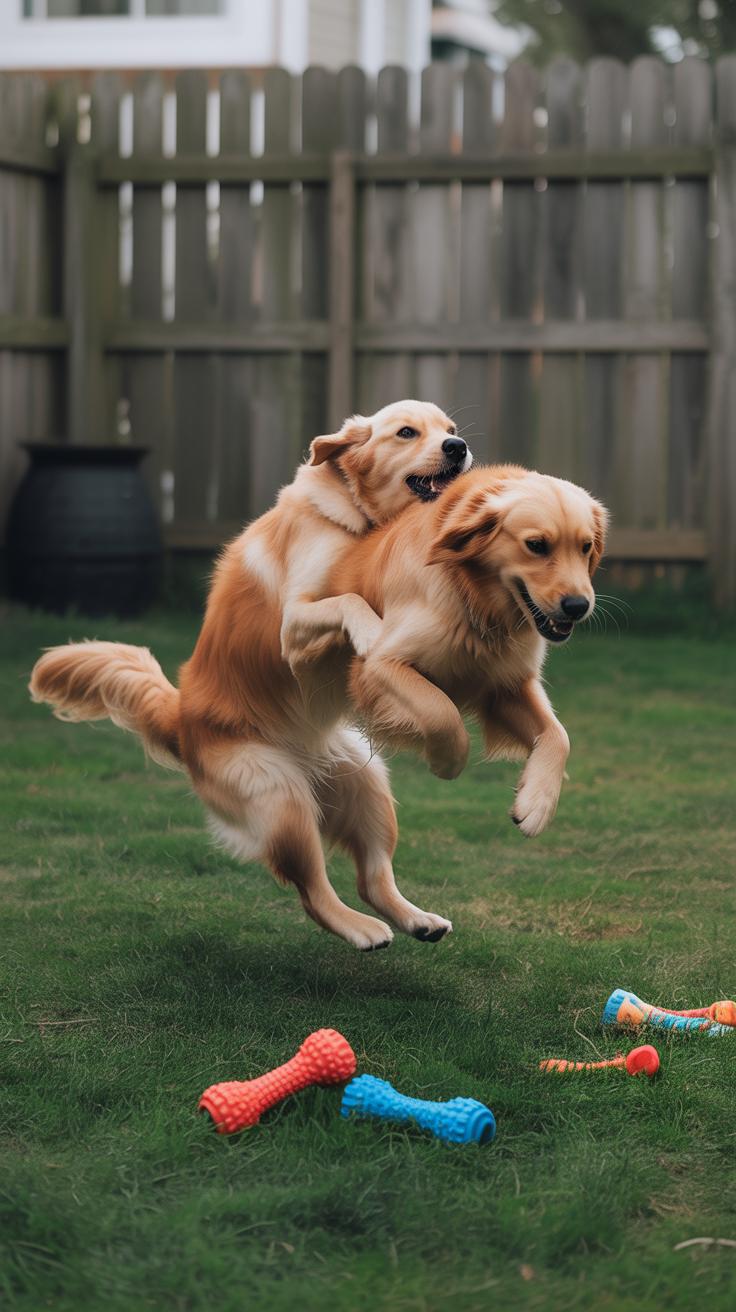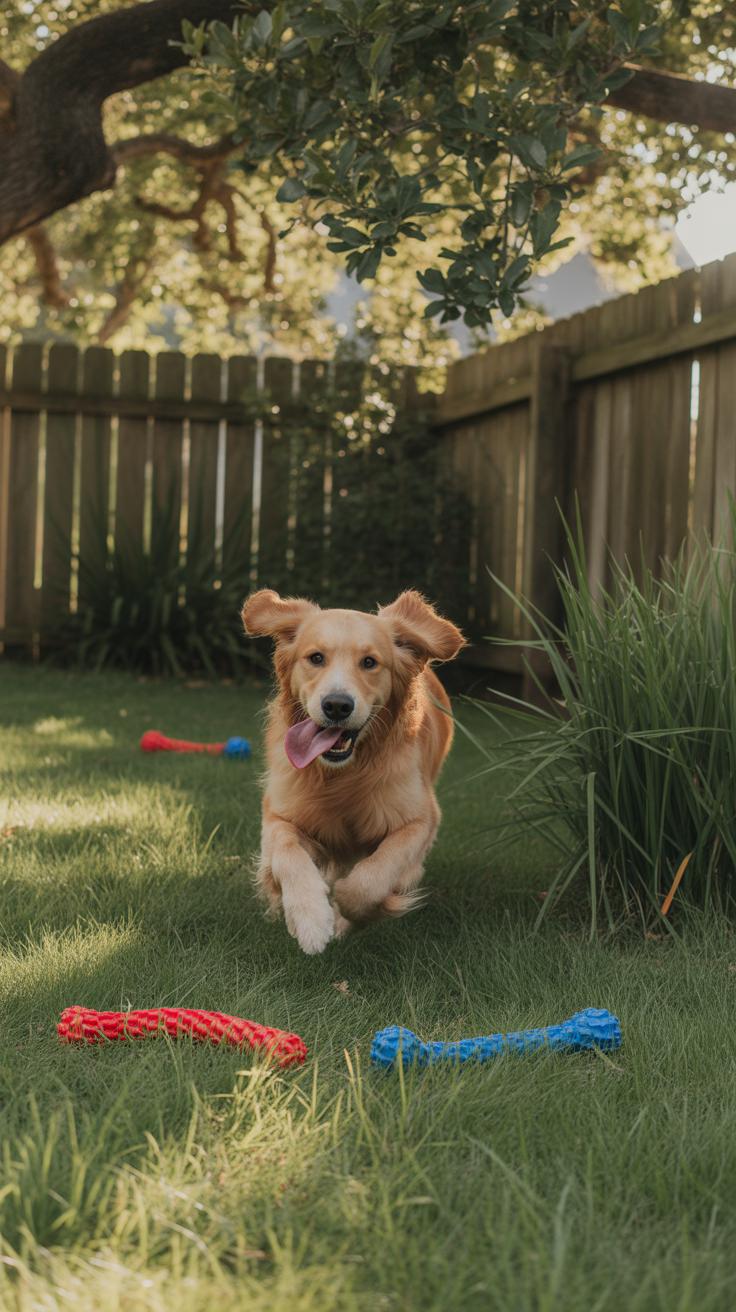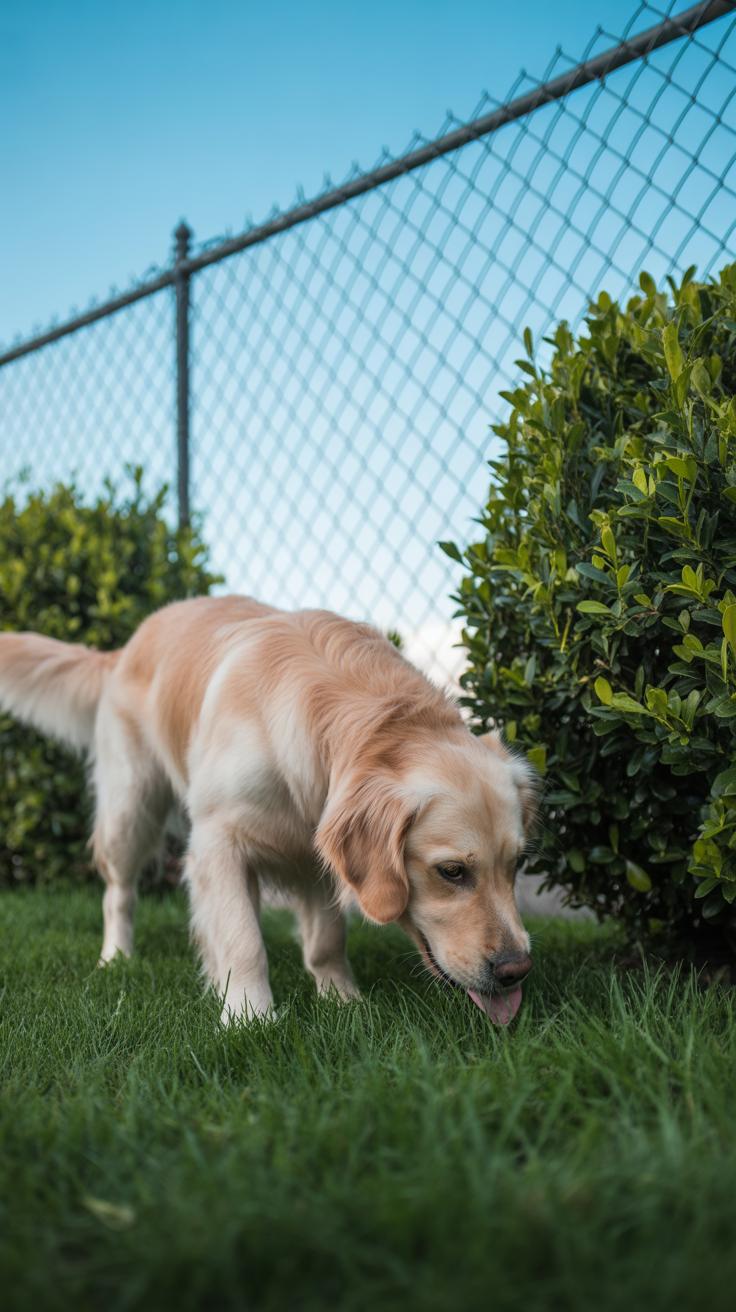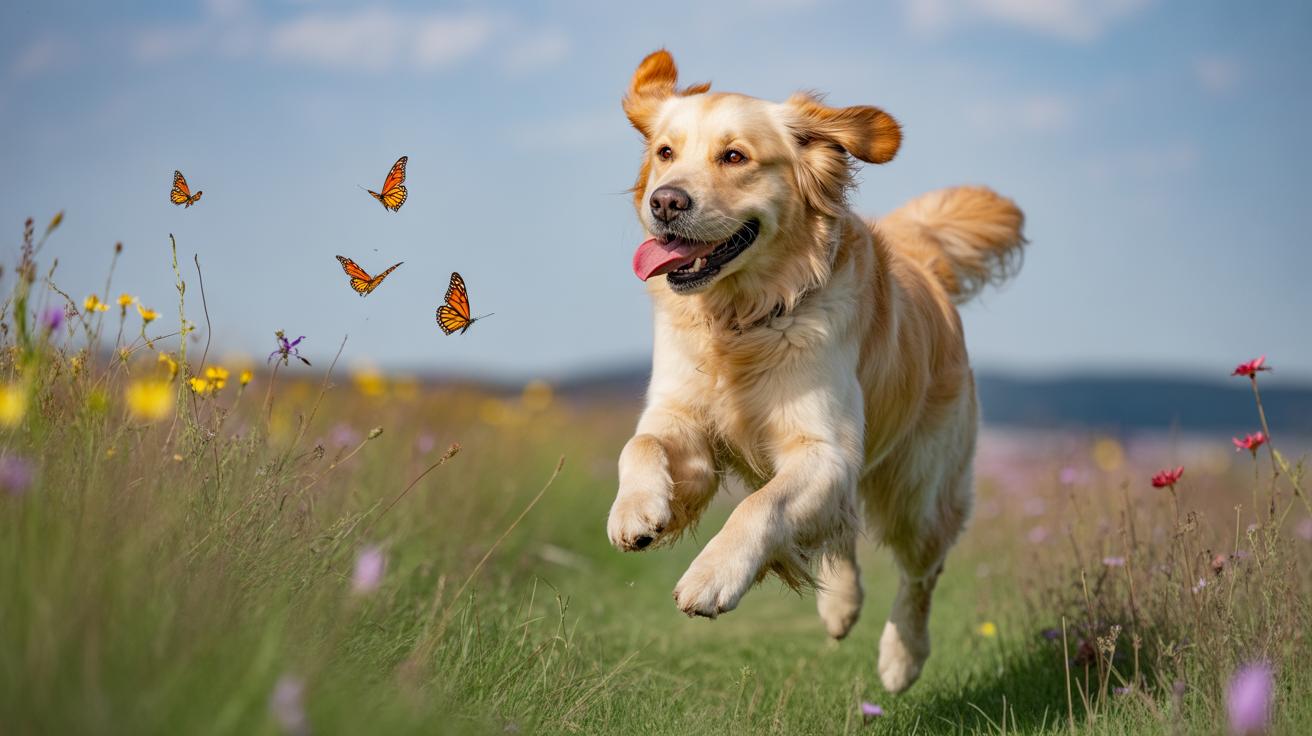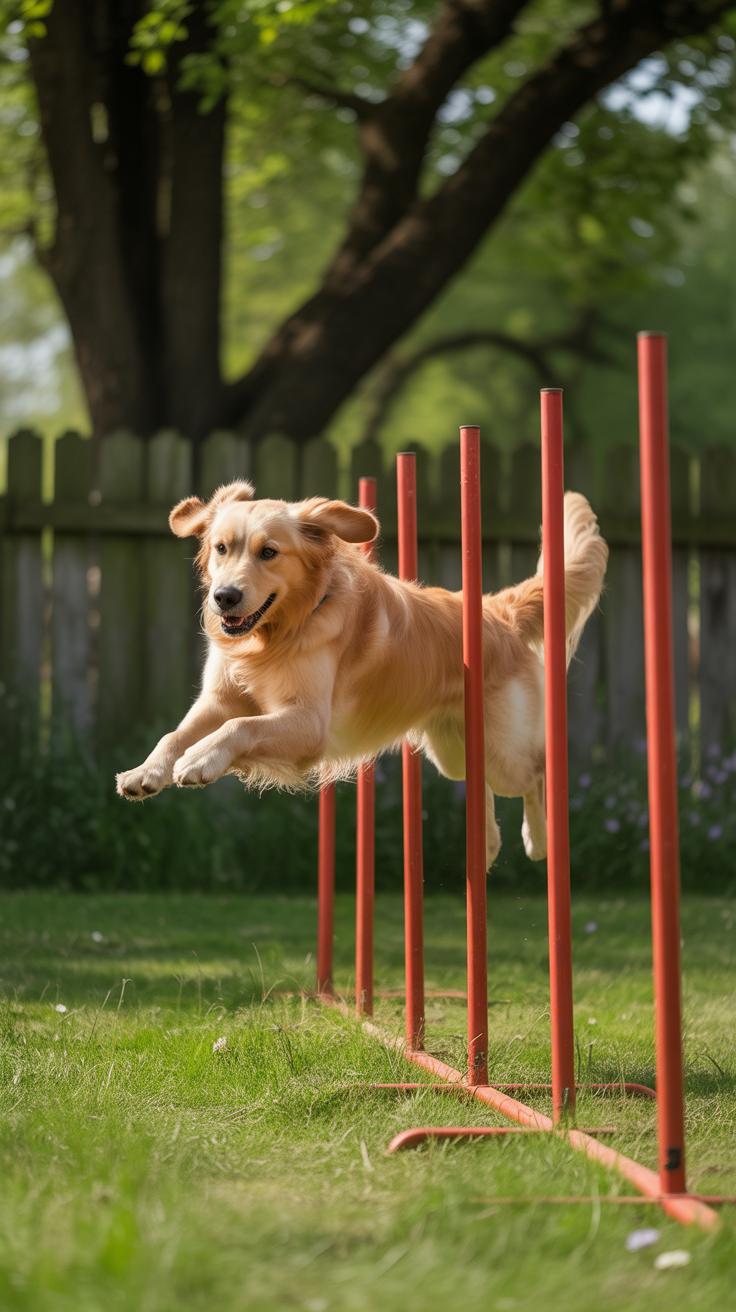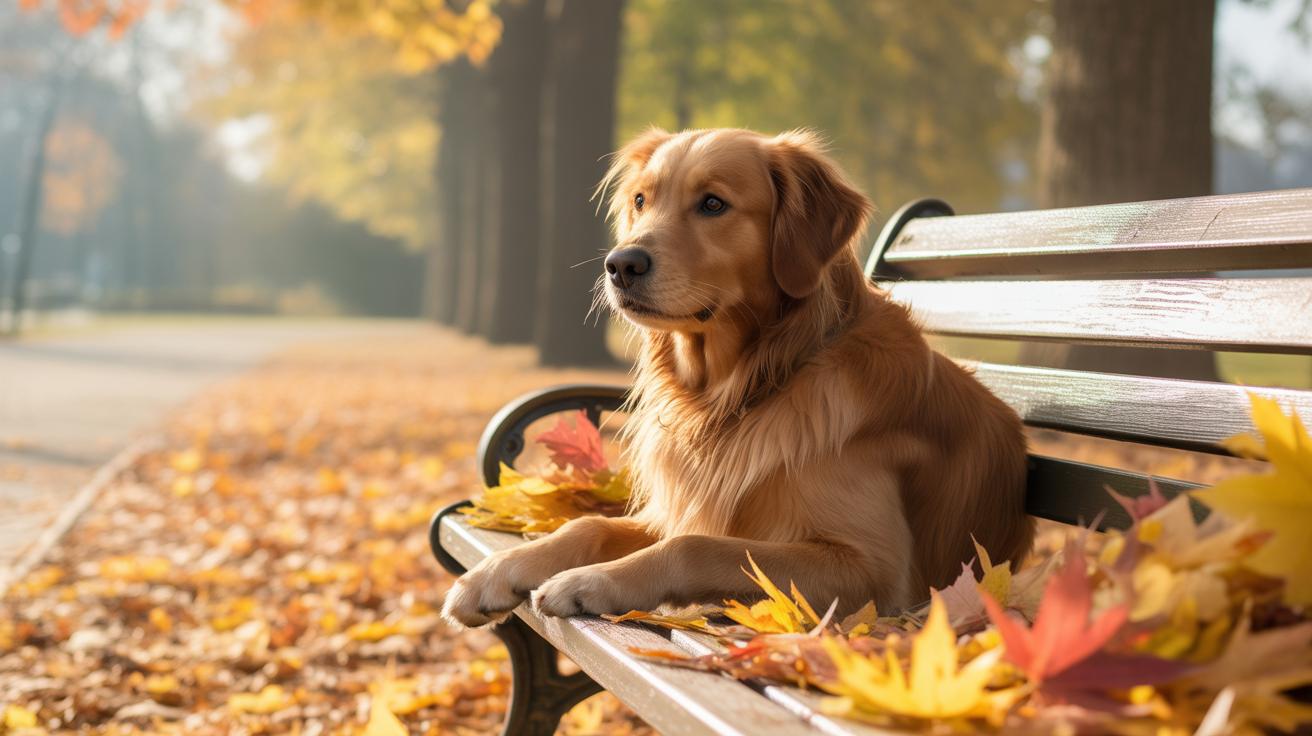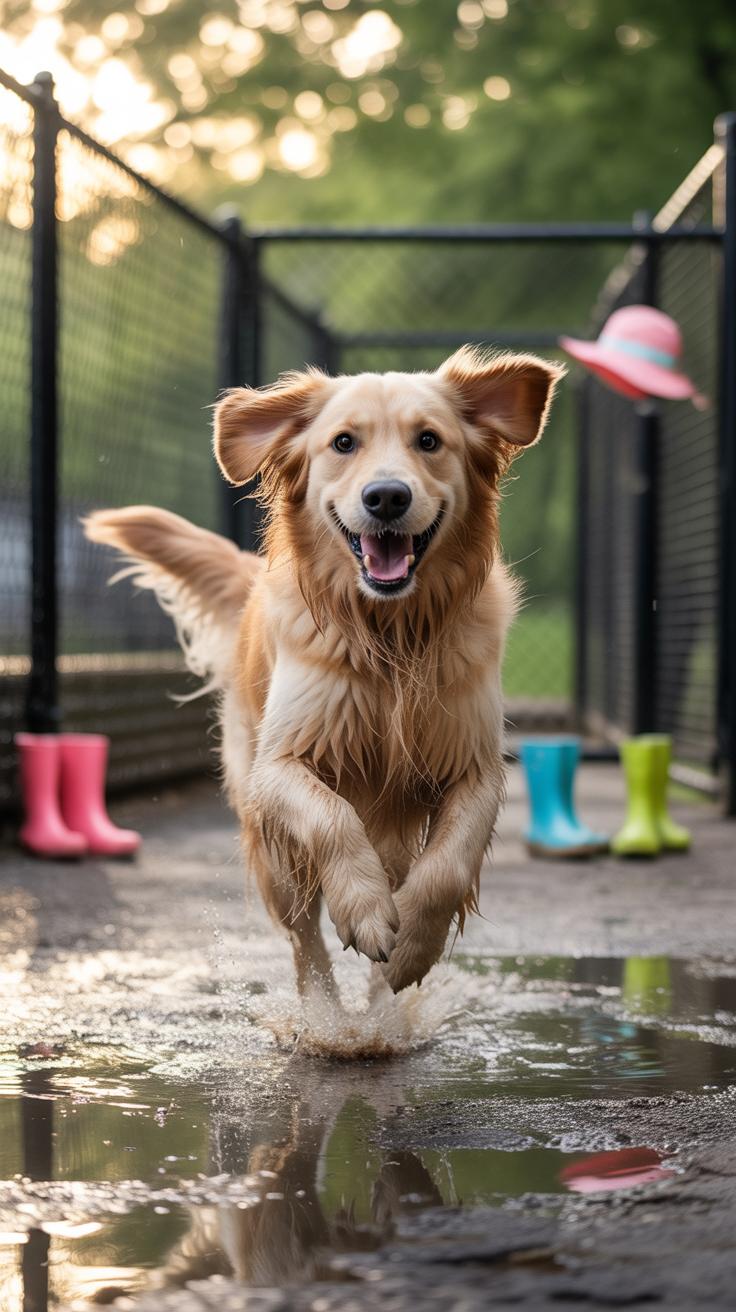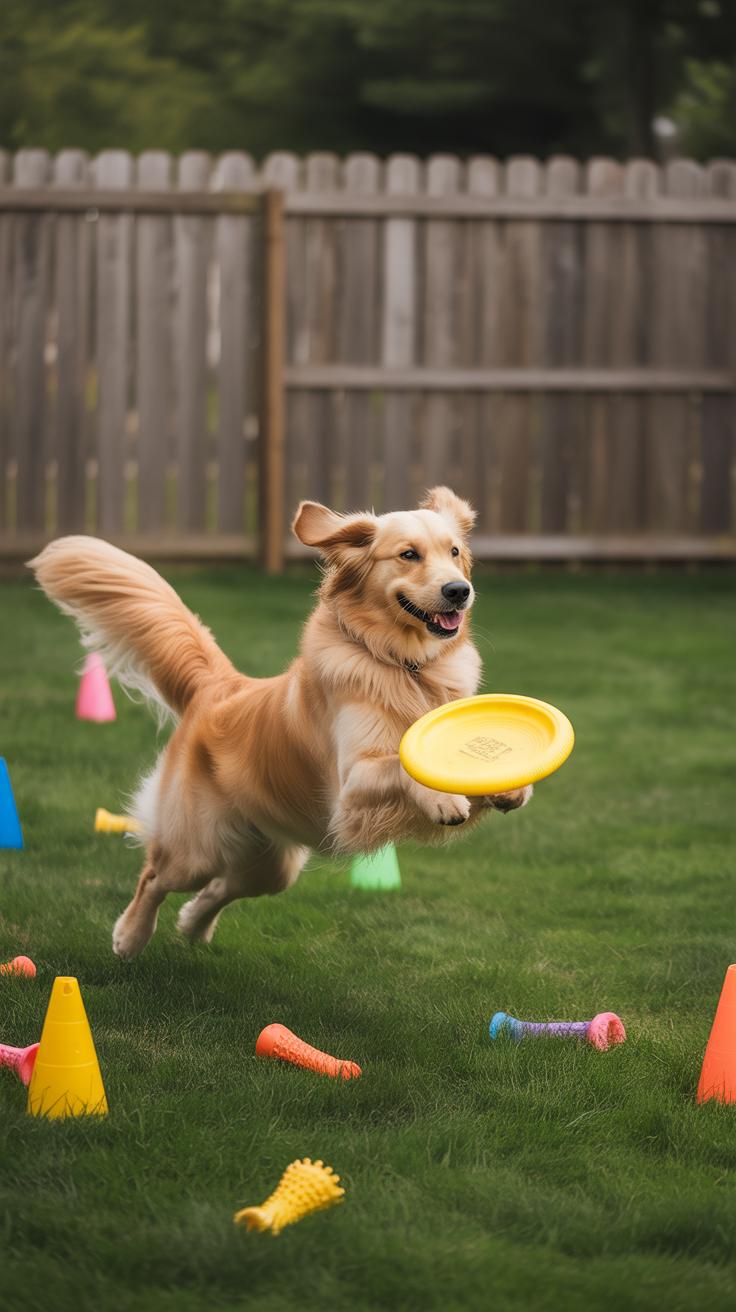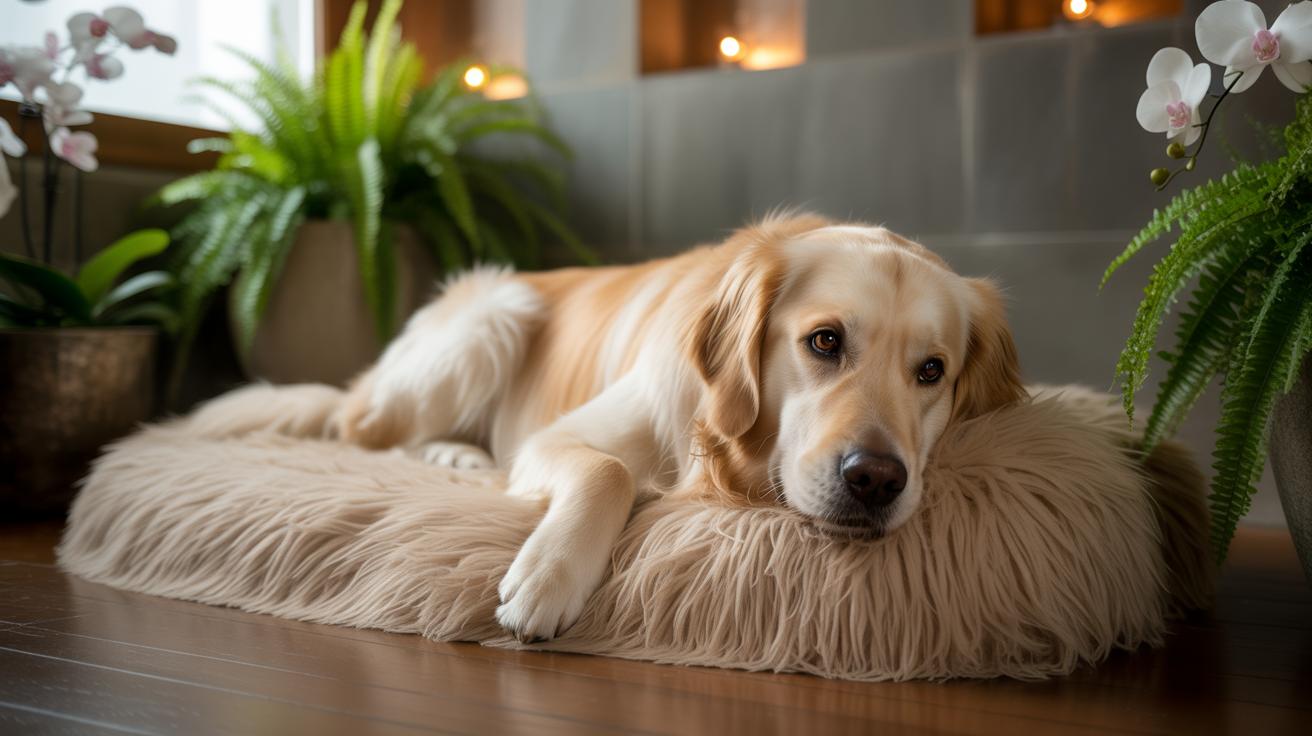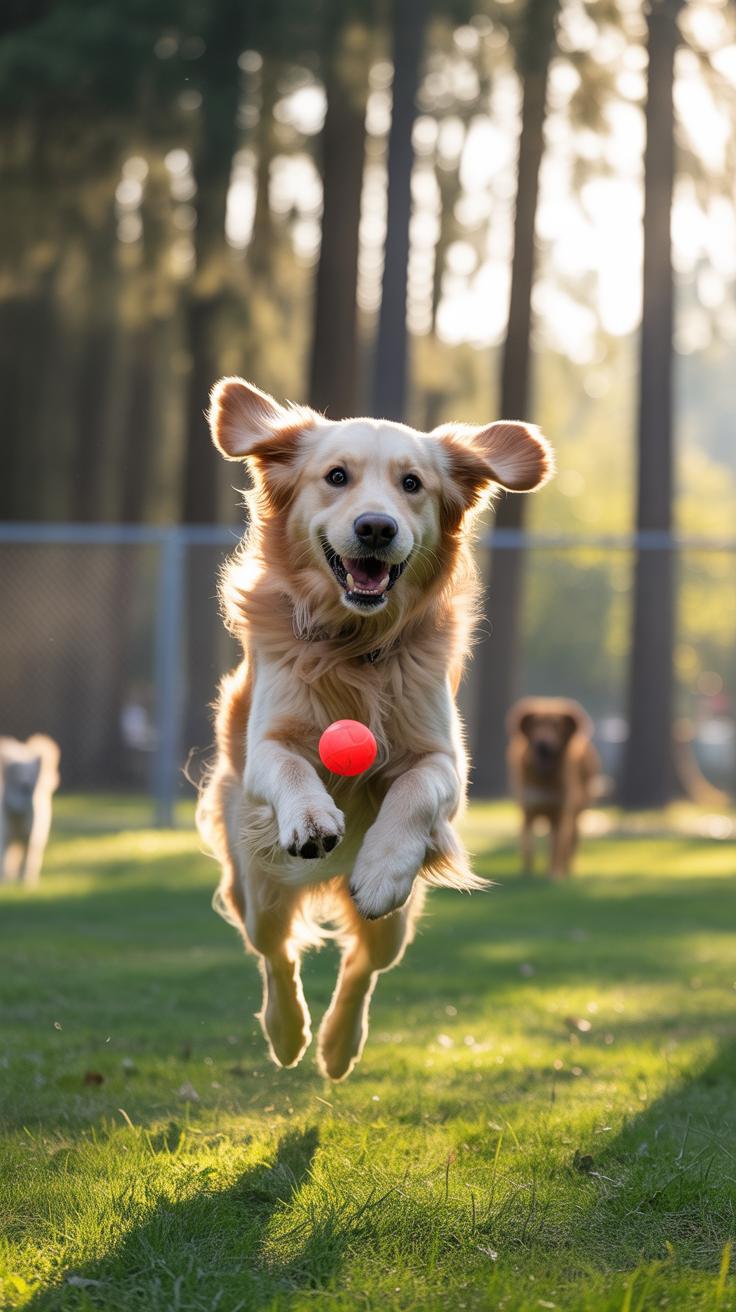Introduction
An outdoor dog area provides your pet with a dedicated space to play, explore, and expend energy. It can be a safe and enjoyable environment for dogs to socialize, exercise, and learn important skills. Understanding the benefits of such areas helps you appreciate how they contribute to your pet’s overall wellbeing.
In this article, we will explore practical reasons why having an outdoor dog area matters. You will learn about its impact on physical health, mental stimulation, socialization, and safety. This knowledge will support you in creating or choosing the best outdoor space for your furry friend.
Safe Space For Exercise
When you create an outdoor dog area, you’re giving your pet a place to move freely without the constant worry of traffic or other outside dangers. Dogs instinctively love to run and explore, but roads or busy sidewalks can turn those moments into risky ventures. With a designated space outdoors, your dog can play as much as it wants—chasing balls, darting around, or simply stretching out their legs—and you can relax knowing they’re safe.
One key factor is fencing. It’s not just about keeping your dog from wandering off, although that’s a major part. A good fence also keeps out unwelcome visitors—other animals or even kids who might accidentally spook your dog or trigger unwanted reactions. If the fence’s height and material fit your dog’s size and jump ability, escapes become unlikely. You might think a short fence should be fine, but some dogs surprise their owners.
Ground surfaces also deserve consideration. Grass is the obvious choice and feels natural under paws, but muddy patches or uneven spots can become problematic. Mulch or soft wood chips offer protection and can drain well, preventing slippery areas. Avoid hard surfaces like concrete that can wear down paws or stress joints over time. Sometimes mixing surfaces works best—grass in sunny spots, mulch in shaded areas—so your dog can choose what feels best on any given day.
Physical Health Boost
Spending time in an outdoor dog area isn’t just about fun—it’s about keeping your dog’s body in good shape. When dogs get regular exercise out there, it helps maintain a healthy weight, which can be tricky for many pets. You’ve probably noticed how easy it is for a dog to gain pounds when they’re mostly indoors, right? Active play in a safe outdoor space keeps those extra calories burning and can prevent issues linked to obesity, like joint pain or diabetes.
Muscles benefit too. Running, jumping, and walking on different surfaces encourages stronger muscle tone and joint flexibility. I’ve seen dogs who seemed a bit stiff loosen up after just a few weeks in a yard—they become more agile and comfortable moving around. Think of it this way: those movements help keep the muscles active and joints lubricated, which might mean fewer vet visits down the line.
Would your dog enjoy a few minutes of sprints or fetch each day? Probably more than you’d expect. That kind of regular activity can be a simple way to support their overall health. So, while you’re giving them room to explore safely, you’re also quietly helping their body stay fit and ready for whatever comes next.
Mental Stimulation
New Smells And Sights
When your dog steps outside into a well-designed outdoor area, it’s not just about stretching their legs. Their nose and eyes get a constant workout—sniffing new scents, spotting movement in shrubs or trees, watching birds or insects. These fresh stimuli keep a dog’s brain alert and curious, breaking the monotony of familiar surroundings. The variety might sound small, but it can make a big difference to their mental state. I’ve noticed that even a quick change in smells, like after a rain, sparks new interest in my dog’s behavior. It’s like a subtle mental exercise just by exploring.
Problem Solving And Play
Toys or puzzles scattered in the outdoor area turn a simple playtime into something more challenging. Dogs instinctively want to solve problems, whether it’s figuring out how to get a treat from a toy or deciding what’s the best way to catch a ball. Watching your dog focus and work through these little challenges can be oddly satisfying—and it helps keep their minds sharp. Maybe your dog isn’t into puzzles, but even interactive play involves some thinking, fast decisions, and learning new tricks. It’s a chance to keep boredom at bay beyond just running around.
Socialization Opportunities
Meeting Other Dogs
Dogs don’t just run around in circles outdoors; they learn a lot from their encounters. When they spend time in an outdoor dog area with others, they pick up on important social cues. Things like body language, tone, and play styles help dogs figure out how to respond. This kind of interaction can teach your pet how to engage without getting too rough or scared.
Some dogs, especially those raised mostly indoors, might initially be unsure or even shy. But with gentle exposure to other dogs, they often grow more confident. They test boundaries and learn limits. Sometimes, they discover that not every dog wants to play, and that’s okay. That kind of understanding could be harder to gain without these real-world meetings.
Interaction With People
Outdoor areas also bring your dog into contact with various people—children, adults, even strangers passing by. This variety helps dogs become more adaptable and less anxious in new situations. Think about how your dog reacts the first time meeting someone new. An outdoor dog area offers a familiar space to practice being calm and friendly.
Repeated exposure tends to boost confidence, but it’s not just about quantity—quality matters too. Friendly, relaxed encounters help build trust. Dogs learn to expect kindness and may respond with more affection or curiosity. So when your dog meets visitors or goes to the park, they’re less likely to feel overwhelmed or act out.
Designing Your Dog Area
When planning an outdoor space for your dog, consider the dog’s size and how much activity they usually get. A small dog might be fine with a compact area, maybe around 100 to 200 square feet, but larger or more energetic dogs often need a much bigger space—several hundred square feet or more. Think about your dog’s habits: do they sprint, dig, or like to explore? That affects how much room you’ll want to give them.
Layout matters too. It’s not just about size, but how the area flows. You might want spots for running alongside quieter zones for resting. I found that dividing a dog area into sections, like one side with soft grass and another with gravel or dirt, tends to keep dogs interested and engaged.
There are a few must-have features to keep in mind:
- Shade: A shaded area protects your dog from sun and heat. Trees or a canopy work well.
- Water access: Fresh water nearby encourages hydration, especially on hot days.
- Safe fencing: A sturdy fence prevents escapes and keeps your pet safe from outside dangers. The height depends on your dog’s agility.
Oh, and one more thing—consider the ground surface. Some dogs hate hot pavement or overly muddy spots. A combination might be best.
Does your dog tend to dig or chew? You may want to add protective features or choose materials that aren’t easily destroyed. Sometimes, it’s a bit trial and error finding what works best.
Keeping The Area Clean
Keeping your outdoor dog area clean is more than just about looks—it’s about your dog’s health and comfort. You probably know that dog waste can quickly become a source of unpleasant odors and potential illnesses, but how often is often enough? Picking up waste daily or at least every other day makes a big difference. Waiting too long lets bacteria and parasites multiply, which your pet could then pick up when sniffing or playing in the area.
Besides waste removal, the ground surfaces deserve attention. If you’ve used materials like mulch, gravel, or artificial turf, they can trap smells or get contaminated over time. Rinsing the area with water helps flush out debris and smells, and occasionally hosing down surfaces with mild, pet-safe cleaners can refresh the space. If the ground covering starts to look worn or smells persist, replacing it might be necessary. For example, swapping out mulch annually can keep things fresh and reduce germs.
Sometimes, fenced spots with dirt or grass pose extra challenges, since urine can cause dead patches or stink. Rotating zones within the dog area or using durable ground covers might help. You might wonder, how strict should the cleaning schedule be? Well, it depends on your dog’s habits, the weather, and how much time they spend outdoors. Your best bet is to observe and adjust. A clean space encourages your dog to enjoy the area more—and that’s really what all of this is about, isn’t it?
Training Benefits Outdoors
Outdoor dog areas offer something a bit different from indoor spaces when it comes to training. They provide a controlled environment that’s still rich with distractions—a kind of middle ground between home calm and the unpredictable world. This balance helps dogs learn to focus despite the sights, sounds, and smells around them, something that’s much harder to replicate indoors.
Think about practicing basic commands like sit, stay, and come in this type of setting. It’s one thing for your dog to obey when there’s nothing else competing for their attention. But outdoors, they get tested. You can see exactly where their attention drifts, and gently bring it back. This process builds solid, reliable behavior that lasts beyond your backyard or the training session itself.
Another aspect worth mentioning is leash-free training. When dog owners have a safe, fenced area, it lets their dog roam a bit with fewer restrictions. This freedom allows dogs to learn control without the leash holding them back. You might notice your dog’s confidence grows—they learn to respond to commands even when they aren’t tethered. At the same time, you keep peace of mind knowing they can’t wander off, which often makes training less stressful for both of you.
In such a setting, patience becomes key. Your dog might not get every command perfectly at first, but the outdoor area gives you the space to keep practicing without the usual interruptions—and that consistency really pays off.
Weather Considerations
Shade And Shelter
Protecting your dog from the elements is more than just keeping them comfortable—it’s about safety, too. When it’s hot, dogs can overheat quickly, so having shaded spots is key. You might use large umbrellas, pergolas, or even plant fast-growing trees that provide natural cover.
Rain or wind can be trickier. A simple roofed section or a few windbreak panels could make a big difference, especially if you want your dog to enjoy the outdoors regardless of weather. Some folks put up small dog houses or insulated shelters within the area. It doesn’t have to be fancy—just effective. If you’re in a windy spot, think about positioning these shelters strategically, maybe near fences or behind bushes, so the wind gets blocked.
Seasonal Adjustments
What works in the summer might not be so great in winter. In colder months, you may want to add blankets or insulated pads inside shelters to keep your dog cozy.
Snow brings its own set of challenges. Clearing paths or placing mats to prevent slips makes outdoor time safer. You might find yourself limiting the time spent outside if the temperature drops too low, but even brief, frequent outings can keep your dog happy.
On warm days, refreshing water bowls and cooling mats can help, while in cooler weather, switching to more enclosed spots encourages your dog to feel secure. It’s a bit of trial and error—watching your dog’s behavior tells you what they prefer as the seasons change. Your outdoor space should shift with the weather, not stay static.
Equipment And Toys
Outdoor dog areas become truly engaging when you add toys and equipment that spark both fun and challenge. Just letting your dog run might be enough sometimes, but mixing in the right playthings can change the whole experience.
Interactive Toys
Toys that tickle a dog’s brain are often overlooked in outdoor settings, but they shouldn’t be. Puzzle balls that dispense treats or hide-and-seek style games make dogs think while they play. Even simple things like scent-based toys can keep your dog busy and curious for longer periods.
Try toys that require your dog to work a bit, like those that need pushing or nudging to release a reward. They’re great for preventing boredom and can slow down food consumption if you use them at mealtime outdoors. I’ve seen dogs take longer to finish their snacks and stay mentally sharp just because of these toys.
Agility And Obstacle Items
Setting up agility equipment is a good way—maybe the best way—to keep your dog physically fit and mentally attentive. Items like tunnels, ramps, weave poles, or small hurdles encourage movement and improve coordination. Your dog gets exercise, but it’s more focused and rewarding than just running around.
Agility setups aren’t just for competitions. Even a few simple obstacles can make your dog pay closer attention and challenge them in fresh ways. Over time, you’ll notice their strength and confidence grow, and sometimes they’ll surprise you trying to figure out new routes or techniques. That sense of figuring something out seems almost as fun for them as the actual run through the obstacles.
Choosing Public Dog Areas
Location And Accessibility
Finding a public dog area that fits your schedule and your dog’s habits can be trickier than it sounds. You want a spot not too far from home, ideally with easy parking or public transport nearby. Sometimes the best parks are just a short walk away—making visits less of a hassle and more of a routine. Think about your dog’s energy level too. For a younger dog bursting with energy, a larger park might be worth a slightly longer trip. But if your dog prefers shorter, calmer outings, a smaller, closer area could be just right.
Also, take note of the time of day when the park is busiest. Some places fill up quickly during mornings or evenings, which might overwhelm a shy or reactive dog. Finding quieter hours might mean a bit of trial and error but can make the experience more positive for both of you.
Rules And Safety Checks
Before you start bringing your dog to a public area, spend some time checking the local rules. Are dogs required to be on leash, or can they run free? Does the park have designated spaces for different sizes or temperaments? Some dogs simply don’t do well in crowded, mixed groups, so knowing this early helps avoid stressful situations.
Safety also means paying attention to fences and cleanliness. A secure fence prevents escapes, which, frankly, saves you from a possible wild chase. I’ve seen parks where fences were broken or even missing in spots, making me think twice about letting my dog off-leash. And then there’s the less glamorous task of scanning the ground for anything sharp or suspicious—broken glass, trash, or dog waste—which can ruin a visit or cause harm.
Running through these quick checks might add a little prep time but keeps your visits smooth and enjoyable. When you find a park that fits your dog’s needs and matches your comfort level, you’re more likely to go regularly. That consistency goes a long way for your dog’s wellbeing and fun.
Conclusions
Providing your dog with access to a well-planned outdoor dog area improves their physical and mental health. Dogs can release energy, reduce stress, and engage with other dogs in a secure setting. This promotes happier and healthier pets.
Investing time and effort into designing or finding an outdoor dog area aligns with your dog’s needs. Regular use of this space helps prevent behavioral issues related to boredom or anxiety. Your dog will enjoy a better quality of life while you gain peace of mind.

